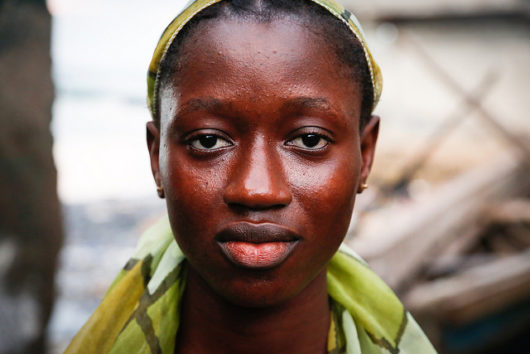Ending Female Genital Mutilation in Sierra Leone

Female Genital Mutilation in Sierra Leone has recently become a topic of conversation both nationally and internationally since it is one of the 28 African countries that still partake in the practice. The World Health Organization officially described female genital mutilation (FGM) as “procedures that intentionally alter or cause injury to the female genital organs for non-medical reasons.” The procedure usually involves some kind of cutting or removing of the genital flesh of a female as part of the initiation into womanhood. Several organizations are spreading awareness of the devastating results of this barbaric procedure and working to end this practice once and for all.
Why FGM Occurs?
The reasons for the procedure of FGM depend on the culture, they but usually fall into four categories: psychosexual, as a way to control female sexuality and maintain virginity; sociological and cultural, the practice is viewed as a vital tradition to the cultural heritage; hygiene and aesthetics, as some communities view the external female genitalia as unappealing and unclean; and finally, socio-economic factors since FGM is often a pre-requisite for marriage and the right to inherit.
The procedure is often performed with penknives, razors or even cut glass, and can result in severe pain, bleeding, cysts, infections, complications in childbirth, infertility and in extreme cases, death. The initiation can also often result in psychological issues from the trauma and pain of the event as well as from the inability to experience sexual pleasure thereafter. An estimated 200 million women and girls have undergone the procedure worldwide, with a staggering 90 percent in Sierra Leone.
Challenges in Stopping the Practice
The practice is ingrained into the culture and holds high social significance. In fact, 69 percent of women and 46 percent of men aged 15-49 believe in the continuation of the practice. FGM has been viewed as an initiation into womanhood and has been an important cultural touchstone for the people of Sierra Leone. This makes it difficult to stop the practice, as many see it as socially embarrassing and being unworthy of marriage if they have not received the initiation.
Another challenge faced to end FGM is that many Soweis, who usually perform the initiation, refuse to end the practice as they see it as a threat to the traditions of the Bondo society. They also receive large amounts of money for the initiations and do not want to lose this source of income.
Organizations Working to End FGM
The Amazonian Initiative Movement (AIM) is a non-governmental organization aiming to end the procedure. It was founded in 2002 by Rugiatu Turay, a victim of FGM herself, and many other women while living in a refugee camp in Guinea during the Sierra Leon’s civil war. AIM activists visit villages and speak with the women who perform this procedure and try to convince them to give it up. They have convinced 700 practitioners from 111 villages to stop practicing FGM.
AIM believes that one of the most efficient ways to begin the ending of practice is to teach women how to read and write since most of the procedures are performed by illiterate elder women. Providing them with the knowledge to read and write will open opportunities for them to pursue alternate means of income and reduce their interest in performing FGM.
Another non-governmental organization, AMNet, is fighting against the old fashioned initiation rite. AMNet works with Soweis, the senior female community members, to change the social stigmas surrounding women in regards to FGM in local communities. The group has high profile supporters like Sia Koroma, the first lady of Sierra Leone, which helps bring attention to their cause.
Legislation is Needed
Non-governmental organizations are working hard to provide knowledge on the issues surrounding FGM, but formal legislation against the practice will further help end the societal pressures and stigmas that encourage the continuance of the initiation rite. Several countries have banned the practice, including more than 20 countries in Africa and most Western European countries. Ending the practice has also become a part of the United Nations 2030 sustainable development agenda.
Female Genital Mutilation in Sierra Leone is not yet illegal, though progress is being made to eradicate the procedure. The country recently ratified the African Unions 2003 Maputo Protocol on Women’s Rights, stating in Article Five of the protocol that female genital mutilation should be prohibited by the government in order to finally end the procedure.
Female Genital Mutilation in Sierra Leone has been a huge cultural touchstone for many communities. The procedure, though, is highly dangerous for females in many areas of their mental and physical health. Many of the activists fighting to end the procedure recognize that immediate ending of the practice will not work, but could lead to underground practices, as the social and cultural significance of the initiation is far too important to many communities. Instead, they hope to use education to spread awareness about the harms of the practice, hopefully, changing opinions over time with respect to cultural significance.
Photo: Flickr
